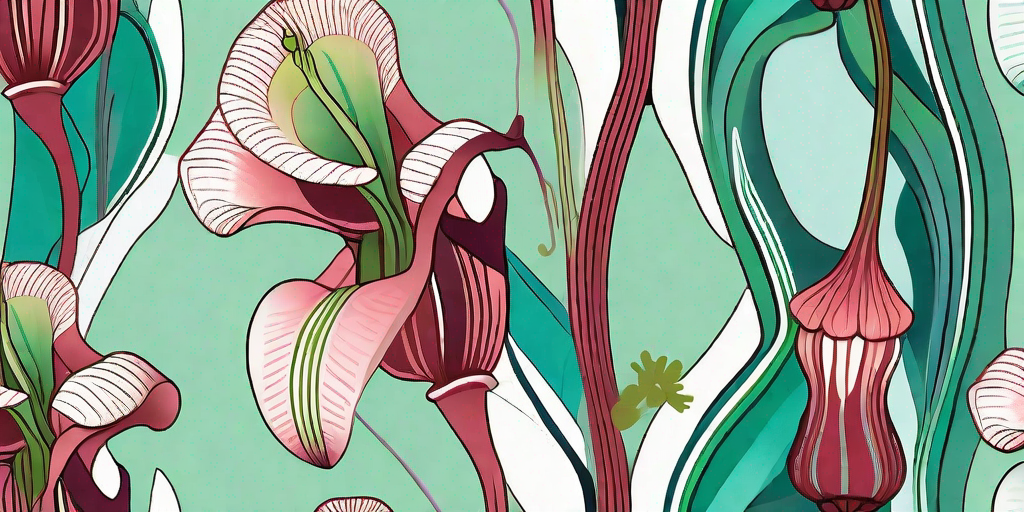
Welcome to the world of carnivorous plants, where the tables are turned and plants feast on insects. Among these fascinating flora, the pitcher plant stands out with its unique, jug-like structure and vibrant flowers. But don't be fooled by their exotic appearance; with the right care and a dash of patience, you can grow these captivating carnivores in your own backyard. So, buckle up, plant enthusiasts, as we dive into the intriguing world of pitcher plant flowers.
Understanding the Pitcher Plant
Before we delve into the nitty-gritty of growing and caring for pitcher plants, let's get to know these botanical beasts a little better. Pitcher plants belong to the Nepenthes genus, a group of carnivorous plants native to various parts of the world, including Southeast Asia, Australia, and Madagascar.
These plants are known for their unique 'pitchers,' specialized leaves that form a deep cavity filled with digestive fluid. Insects, lured by the plant's nectar, slip into the pitcher and are subsequently digested. It's a plant-eat-bug world out there, folks!
But it's not all about the pitchers. Pitcher plants also produce stunning, pendulous flowers that are a sight to behold. These flowers, often overlooked due to the plant's carnivorous nature, add a touch of beauty to the otherwise deadly demeanor of the pitcher plant.
How to Grow Pitcher Plants
Choosing the Right Variety
There are over 170 species of pitcher plants, each with its own unique characteristics and care requirements. Some are highland varieties that prefer cooler temperatures, while others are lowland species that thrive in warmer conditions. Choose a variety that suits your local climate and indoor conditions.
Some popular varieties include Nepenthes alata, a hardy species that's perfect for beginners, and Nepenthes ventricosa, known for its vibrant, red pitchers. For those seeking a challenge, the giant Nepenthes rajah, with its enormous pitchers, might be just the ticket.
Planting Your Pitcher Plant
Once you've chosen your pitcher plant variety, it's time to get planting. Pitcher plants prefer a well-draining, acidic soil mix. A combination of sphagnum moss and perlite works well. Remember, these plants are used to nutrient-poor soils, so resist the urge to enrich the soil with compost or fertilizer.
Plant your pitcher plant in a pot with plenty of drainage holes to prevent waterlogging. Place the pot in a tray of distilled water, as pitcher plants like their roots to be constantly moist but not waterlogged. And remember, no tap water – these plants are sensitive to minerals and chemicals commonly found in tap water.
Caring for Your Pitcher Plant
Light and Temperature
Pitcher plants love light. Place your plant in a location that receives bright, indirect light for most of the day. A south-facing windowsill is often a good spot. But be careful not to expose your plant to direct, scorching sunlight, as this can cause leaf burn.
As for temperature, this will depend on the variety of pitcher plant you've chosen. Highland varieties prefer cooler temperatures, around 70-75°F during the day and 50-60°F at night. Lowland varieties, on the other hand, like it hot, with daytime temperatures of 80-90°F and nighttime temperatures of 70-80°F.
Feeding Your Pitcher Plant
Here's where things get interesting. Unlike most plants, pitcher plants don't rely on soil nutrients to survive. Instead, they get their nutrients from the insects they catch in their pitchers. If your plant is indoors and doesn't catch many insects, you might need to play the role of bug provider. A few dead flies or small pieces of raw meat every couple of weeks should do the trick.
But remember, overfeeding can be just as harmful as underfeeding. If your pitcher plant's pitchers are full of undigested insects, it's time to cut back on the bug buffet.
FAQs About Pitcher Plants
- Are pitcher plants easy to grow?
With the right care and conditions, pitcher plants can be relatively easy to grow. They do require specific soil, water, and light conditions, but once these are met, they can thrive with minimal care.
- Can I grow a pitcher plant indoors?
Absolutely! In fact, many pitcher plant varieties do well indoors, as it's easier to control their growing conditions. Just make sure they get plenty of light and their soil stays moist.
- Do pitcher plants need to eat bugs?
While pitcher plants do derive nutrients from insects, they can survive without them, especially if they're grown in nutrient-rich soil. However, feeding them the occasional insect can help them thrive.
Conclusion
And there you have it – a comprehensive guide to growing and caring for pitcher plant flowers. These unique, carnivorous plants may seem intimidating at first, but with a bit of knowledge and care, they can make a fascinating addition to your plant collection.
So why not give it a try? After all, who wouldn't want a plant that doubles as a bug catcher? Just remember to keep your fingers clear of the pitchers!















